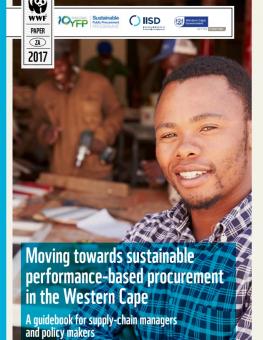
Moving Towards Sustainable Performance-Based Procurement in the Western Cape
Read this report to discover how public procurement is no longer a back-office function anymore, but a crucial pillar for delivering government services, and a strategic one for tackling climate change.
This report explores how public procurement is no longer a back-office function anymore, but a crucial pillar for delivering government services, and a strategic one for tackling climate change.
Worldwide governments are strategically rethinking the way they are spending taxpayers’ money. The international and high-level support for reforming public procurement laws, policies and processes to deliver value for money across the lifecycle of the goods, services and assets governments are buying, has never been more present. In 2015 the United Nations also adopted the Sustainable Development Goals (SDGs) that include public procurement as an important tool for shifting markets towards more sustainable consumption and production patterns.
Sustainable, green, smart or strategic public procurement is ultimately about ensuring that the products and services purchased by governments are as sustainable as possible. This means reducing environmental impact, generating positive social and economic impact in a cost-efficient manner, and driving and creating new markets for innovative climate-friendly technologies, goods, services and infrastructure that generate co-benefits for society.
You might also be interested in
Implementing Sustainable Public Procurement in South Africa: Where to start
This report investigates the extent of policy space for the practical uptake of sustainable public procurement (SPP) in South Africa.
Monitoring Progress in Green Public Procurement
This report outlines the importance of monitoring progress in green public procurement (GPP) and highlights various methodologies, challenges, and recommendations.
Gender Equality at the Heart of Recovery: Advocating for Gender-Responsive Procurement in Ukraine
Ukraine is already preparing for reconstruction, which will cost an estimated USD 411 billion and take at least 10 years. The integration of gender considerations into public procurement processes could generate greater inclusivity in a rebuilt Ukraine.
A Sustainable Asset Valuation of Non-Motorized Transport in Coimbatore, India
A Sustainable Asset Valuation (SAVi) of the economic, social, and environmental benefits of a non-motorized transport (NMT) network in Coimbatore, India.